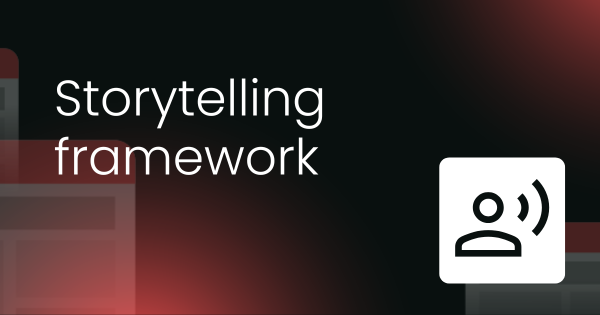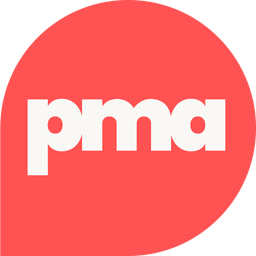Storytelling is a vital part of product marketing. Whether you’re talking to commercial teams about a delayed product launch, telling your customers about a new product, or trying to get stakeholders’ buy-in for your product roadmap prioritization strategy, every day, there’s a story to tell.
Whether you like it or not, storytelling is everywhere. Even if you don’t consider yourself a natural storyteller, you have to adapt and refine your skills, or you'll struggle. No matter how brilliantly analytical or excellent at managing projects you are, if you can't inspire, get buy-in, or command people's time and attention, it's going to be a tough ride.
That’s why in this article, I’ll explore the keys to effective storytelling, honed through over a decade’s experience in the realms of advertising and product marketing.
Marketing to humans, not stereotypes
As someone who’s worked in both B2B and B2C, I often get asked about the differences between the two in terms of marketing.
That distinction might have been relevant 15 years ago, but I don’t think it is anymore. Whether you’re in B2B or B2C, you’re ultimately selling to humans. While there's a fine balance to strike between emotive and functional marketing, we’re still targeting a persona, not a business.
Just look at how Slack, Miro, and MailChimp have humanized their products, addressing people directly. That's something I try to inject into our playbook at Juni too – appealing to both the people in businesses, and not sticking to stiff B2B dialog.
With so many sub-categories nowadays – DTC, CTC, B2C, and more – if you wipe those labels away and ask "Who’s going to buy this?" it comes down to a human. For a human to buy your product, they need to be able to rationalize that decision and it needs to appeal to their emotions. That’s the power of great storytelling in marketing.
Want more on storytelling? 📚
Grab our eBook for a deep dive into what you can do to stand out in your market with product stories that drive your bottom line (it’s also free).
Telling stories that resonate
Part of our role as product marketers is seeding messages in customers' minds – whether via testimonials, case studies, or product demos. We need to demystify complex ideas and make them understandable. And then on the brand side, we have to tap into emotions and build trust and relevance.
These two types of storytelling need to live in harmony with one another. Rationality and heart-tugging should coexist, not compete. That being said, to drive impact, your story needs to address a specific need.
There are a few fintech companies that do this really well. I'm impressed by how Ramp gets ahead of trends in their content. Before anyone was even thinking about a recession, they shared ideas on saving money – key to their offering.
What makes Ramp’s storytelling so special isn't just knowing their customers, but understanding what sets them apart as a company. That shines through in their messaging, making it all the more authentic.
Meanwhile at Juni, we're pioneers in a new space, verticalizing banking for eCommerce businesses. That means there's lots of uncharted territory, particularly within the European market. That gives us a lot of creative freedom to craft new stories and cement our positioning in a new category.

How to approach storytelling based on your company’s stage
In Aristotle's rhetoric triangle, the three core elements of persuasion are logos (logic), ethos (credibility), and pathos (emotion). Great stories balance all three. But which matters most?
Well, the right focus evolves as your company grows and changes. We're currently in a high-growth stage at Juni, so we really need to articulate the value we provide customers. In other words, we’re emphasizing logic – how we save our customers time and money and free them from mundane financial management tasks.
Equally crucial but second on our list of priorities right now is pathos – the emotional gain, the feeling you'll get from our product.
Leaning into credibility is powerful too, and you can do that via social proof and testimonials. That’s a great tactic to use when you hit scale and can say, "A million users trust us to..." However, it’s trickier in a startup when you can't yet claim to millions of happy customers.
Ultimately, all three elements of Aristotle's triangle play a role in effective storytelling., but the emphasis evolves alongside your company's maturity and customer needs.
Vital frameworks for storytelling
It can be tricky to know when to stick to a storytelling framework and when to let your creativity run free. The best approach probably varies from scenario to scenario.
There’s a delicate balance to strike between frameworks and intuition. While I see myself as more of a creative type, structure keeps me focused and I couldn’t thrive without it. Frameworks certainly have their place, especially when things are new or your company is experiencing hypergrowth.
The most powerful frameworks though are the ones that enable you to better understand your audience. After all, go-to-market (GTM) success comes down to your ability to inspire and rally the team.
Just think of a GTM kickoff call; it’s up to you to rally the troops and get everyone excited about the new feature you’re launching amidst all their other priorities. For that to work, you have to understand your stakeholders.
Looking at the bigger picture, in multi-market companies we often underappreciate the value of deep localization. From onboarding to how you address customers in emails and calls, to how your customer success team answers the phone, there's a lot of opportunity to better define and address target audiences.
That's where frameworks for segmentation, targeting, and positioning (STP) become key. They allow you to scale your approach and align stakeholders outside product marketing.
Top tips for crafting great stories
Let’s wrap up with three tips that’ll help you tell irresistibly persuasive stories:
- Start with the end in mind: What happy ending are you building to? How do you define success? What’s the story you want people to hear? Once you’ve figured that out, it’s simply a matter of reverse engineering a plan to get there.
- Know your audience: Your story is only as compelling as the audience's interest in it. You need to understand who you're telling your story to and what they care about.
- Innovate: It’s sad how little innovation there is in storytelling today. One company sets a standard, and then others just reproduce the same kind of content. But there’s a great opportunity to break the mold by deeply understanding your customers and staying on top of their evolving needs and changes in the market.
Get Storytelling Certified
Led by Elliott Rayner, CMO at ARION, Storytelling Certified: Masters is an industry-standard, self-paced curriculum designed to help you understand the science behind stories that sell.
Whether you're just starting out in product marketing, or simply looking to refine your knowledge on communicating and resonating with your customers on a deeper level, this certification is crammed with knowledge to equip you with a set of skills needed to create impactful and successful product narratives.
Inside, you'll access:
🎁 5 modules packed with actionable insights.
🎁 Vetted exam questions to test your understanding.
🎁 8 templates to put your learning into action.
🎁 Official certification to showcase your skills and boost your credentials.
By the end of the course, you'll learn how to:
✅ Construct an actionable storytelling framework.
✅ Communicate to your audience with confidence and passion.
✅ Use your purpose to ensure your story remains consistent.
✅ Have an impactful change on your product’s success.
This article is based on Nick’s insightful interview with Elliott Rayner on the Storyselling podcast. You can listen to the interview in its full glory on Spotify or Apple Podcasts.
Since the time of recording, Nick has been promoted to Senior Director of Marketing at Juni. Congratulations, Nick! 🎉


















 Follow us on LinkedIn
Follow us on LinkedIn





.svg)
Start the conversation
Become a member of Product Marketing Alliance to start commenting.
Sign up now